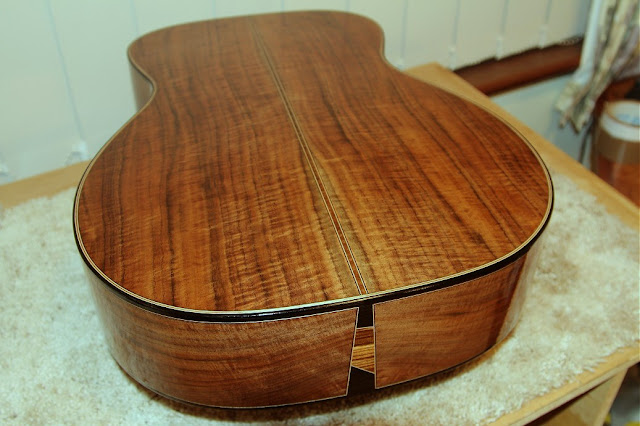After promising myself I wouldn't begin my next guitar until the two I'm currently waiting to spray were complete, I've relented a little and have spent some time fabricating and inlaying some new rosettes over the past week. With wet weather still the norm, and a trip to Africa looming large, it was becoming increasingly unlikely that I'd get to apply finish to those guitars any time soon, hence the broken promise - an opportunity to spend time in the workshop!
 |
| European Spruce, with Zebrano, Ebony and coloured veneer rosette |
 |
| Port Orford Cedar, with Zebrano rostete |
 |
| Sitka Spruce, with Zebrano and Ebony rosette |
 |
| Engelmann Spruce, with East Indian Rosewood rosette |
I wouldn't tempt fate by proclaiming that I've in any way mastered this aspect of guitar construction, but I'm pleased to be able to produce rosettes like these to an acceptable standard fairly consistently these days.
Cheers
Pete





















